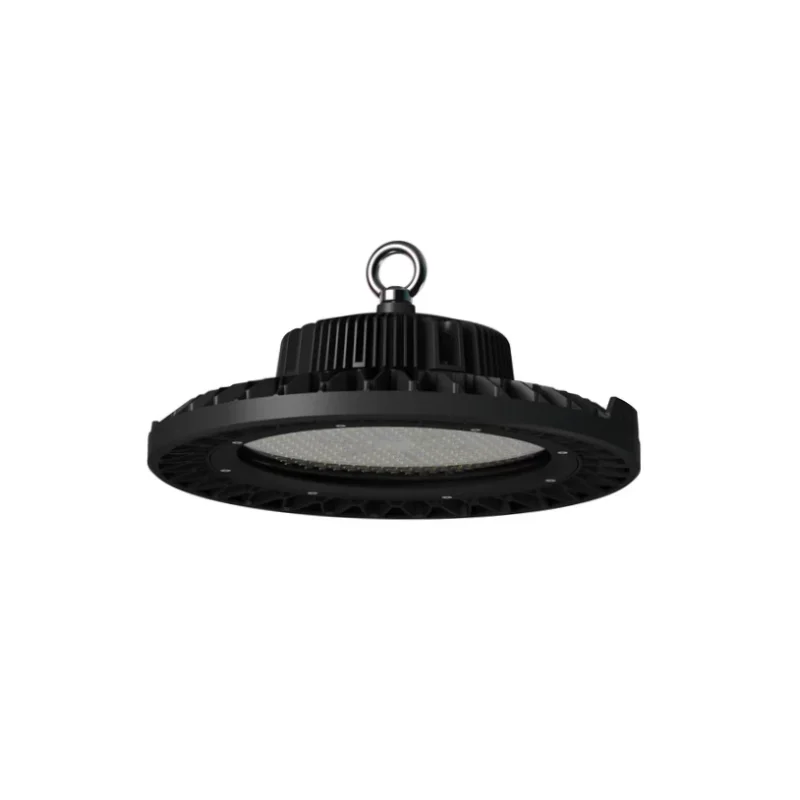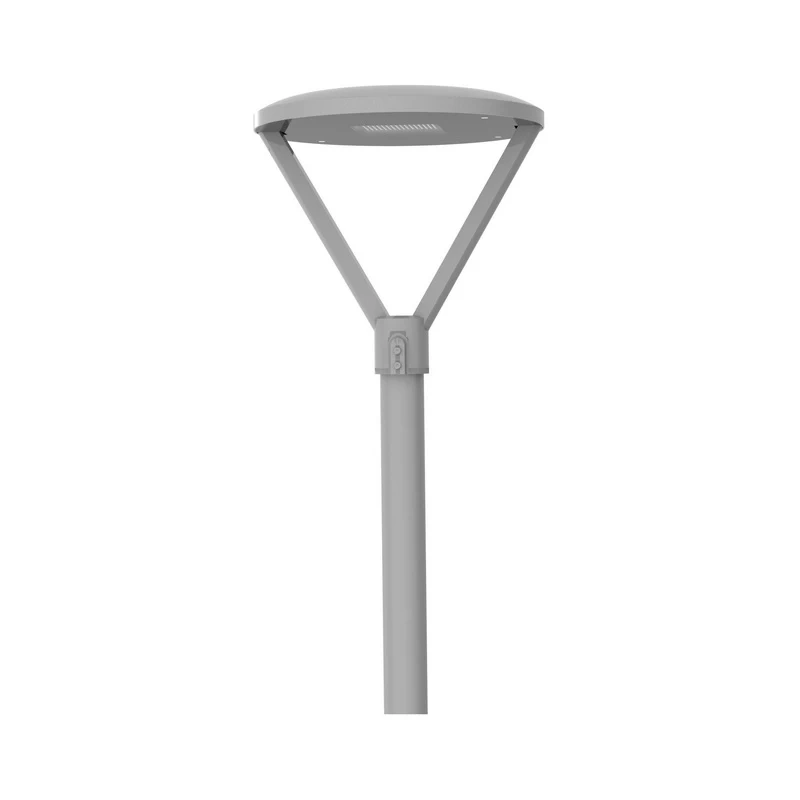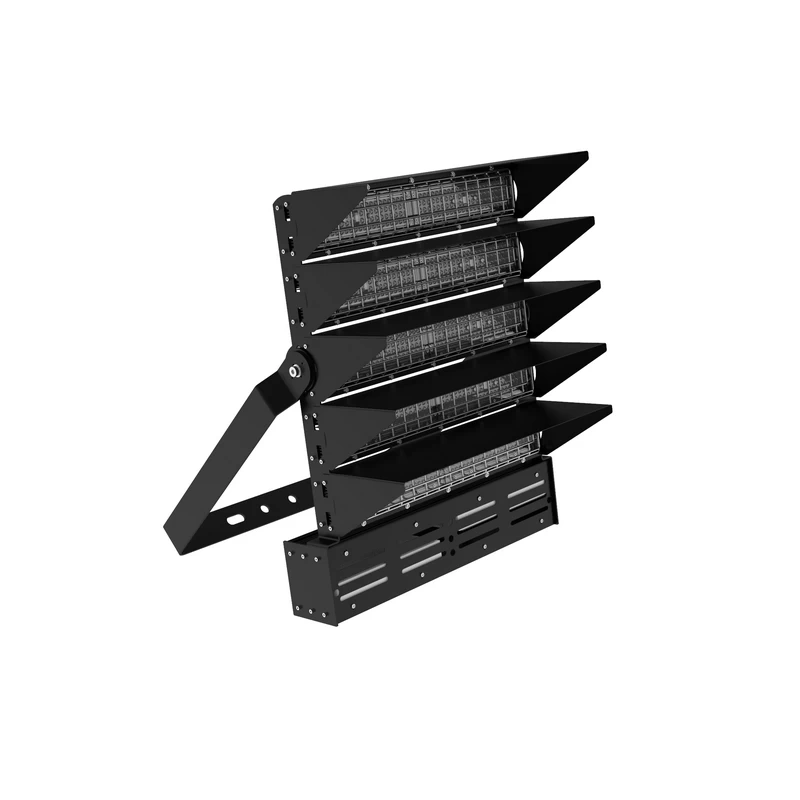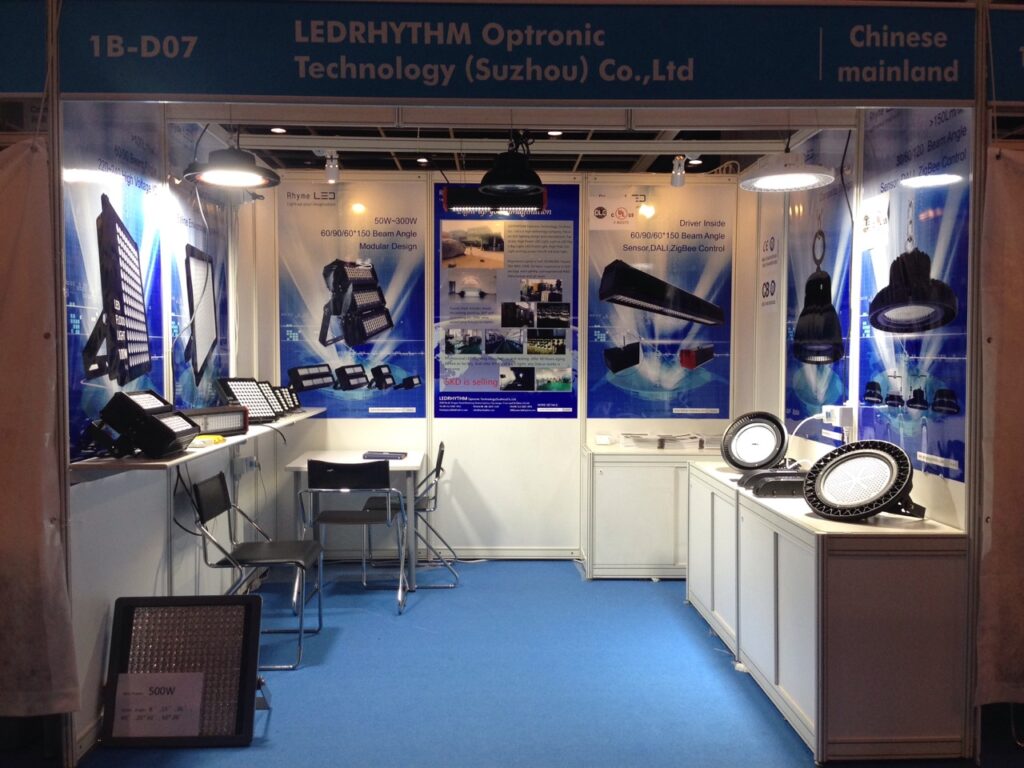Table of Contents
ToggleIntroduction
LED flood lights and spot lights serve distinct purposes in lighting applications. Flood lights emit a soft and wide light, providing uniform illumination across large areas, whether for high ceiling lighting or stadium lighting. In contrast, spot lights offer a brighter, focused beam, ideal for highlighting specific points like stage follow lights or garage spotlights. This article explores the differences, applications, and how to choose between LED flood lights and spot lights.
What Are LED Flood Lights and Spot Lights?
Flood lights are designed to cover a wide lighting range, delivering soft and even lighting. They are mainly used to illuminate large areas and typically feature a beam angle between 90° and 120°. Common examples include parking lots, stadiums, factories.
Spotlights, on the other hand, have a narrower illumination range and emit a concentrated light. Their beam angle is usually between 15° and 45°, making them ideal for localized illumination such as artwork, stage lighting and flashlights.

Spot Light vs Flood Light
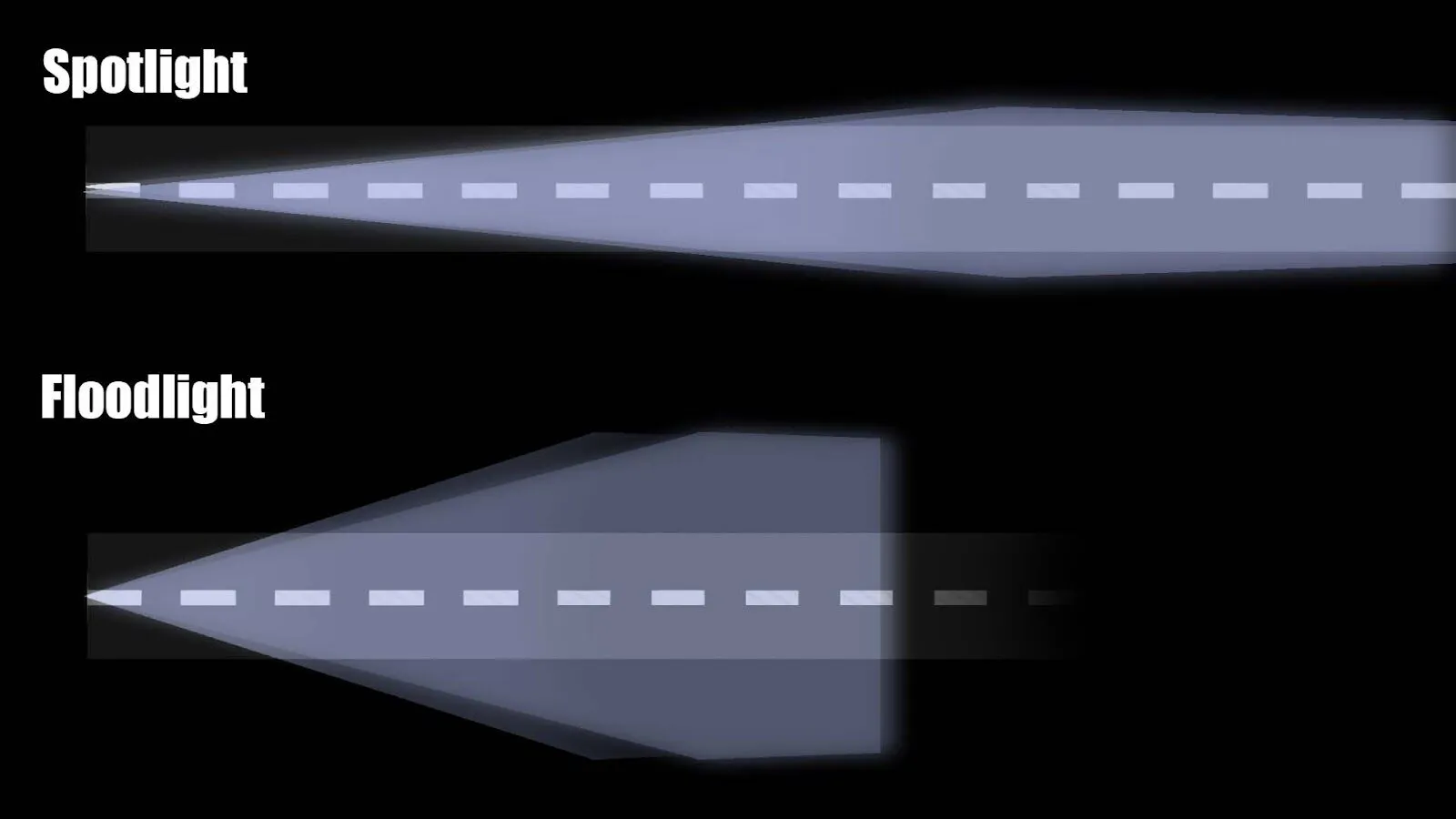 Core Features
Core Features
- A wide beam angle and uniform coverage are the core characteristics of LED floodlights.
- A narrow beam angle and high center light intensity are hallmarks of LED spotlights.
- Floodlights have very wide beam angles, typically ranging from 90° to 120° or wider. Some wide-angle floodlights can even reach nearly 180 degrees.
- Spotlights have narrower beam angles, typically between 10° and 45°. The beam angle varies depending on the intended use.
- Floodlights : Provide uniform, shadow-free illumination over a wide area. The light distribution is broad and soft, with blurred boundaries and no sharp beam edges.
- Spotlights : Focuse light onto small, specific target area or object, creating strong contrast between light and dark, highlighting the illuminated object. The light is concentrated, with very bright center area and typically sharp beam outline.
- Flood lights : Power ranges from tens to kilo watts and even higher, meeting the lighting needs of large areas. See our 50W-2000W LED flood light series.
- Spotlights : The power range is also wide, and even lower-power spotlights (10-30W) can provide very high illumination within the focused area.
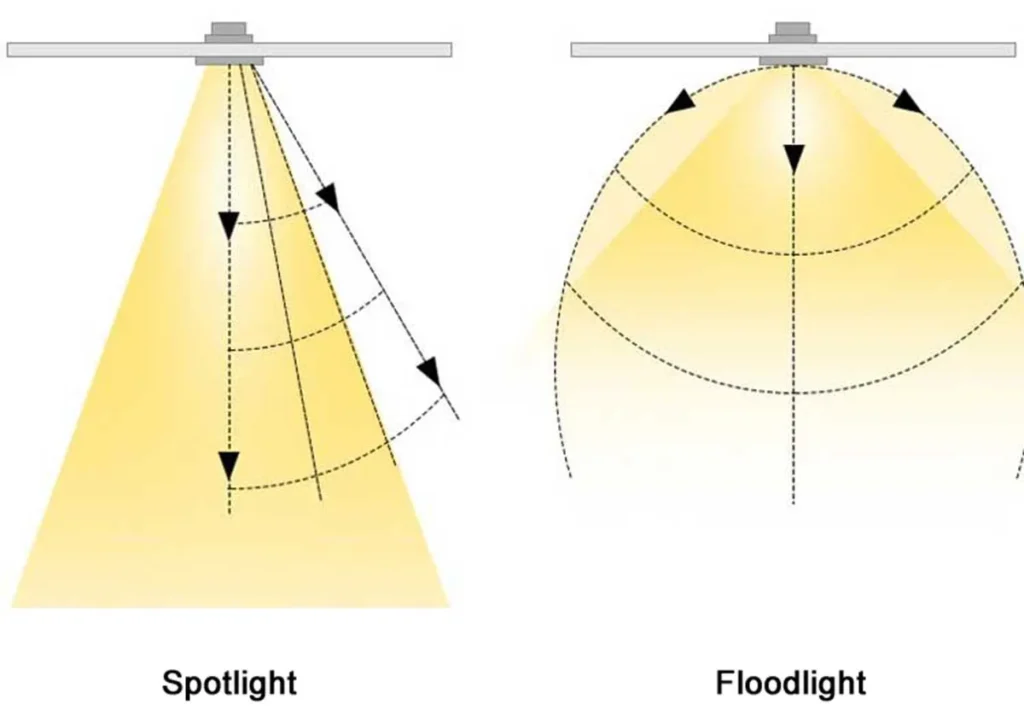
| Feature | LED Flood Light | LED Spotlight |
|---|---|---|
| Main Purpose | Uniform illumination of large areas | Focused lighting for specific small areas/objects |
| Beam Angle | Wide (typically > 90°) | Narrow (typically 10°–45°) |
| Light Distribution | Wide, uniform, soft, with blurred edges | Focused, high central intensity, sharp edges |
| Effect | Entire area is bright, no obvious shadows or contrasts | Target area is very bright, surroundings darker, high contrast |
| Visual Focus | The illuminated area itself | Highlighted objects or spots within the area |
Do all flood lights have wide beam angles?
Obviously not. Modern flood lights can be customized with variety of beam angles, such as 15°-120°, suitable for lighting different areas.
Flood lights are defined as lighting large area. For example, football fields and parking lot floodlights use narrow beam angles, but they are installed at heights of 15m or even higher to provide uniform illumination over a large area.
Regardless of whether beam angle is 15°, 30°, 45° or 60°, as long as the design purpose is to evenly illuminate large area, it is collectively called floodlight or a narrow-angle floodlight.

How to Choose LED Flood Lights and Spot Lights?
Choosing between flood lights and spot lights depends on several factors, including beam angle, color temperature, luminous flux, CRI, waterproof standard, and overall quality and lifespan.
As mentioned earlier, you need to choose the corresponding floodlight or spotlight according to the lighting requirements of the actual scene. For example, outdoor high poles require floodlights with narrow beam angles.
The following are recommended floodlight options. For details, please see how to choose the best floodlight.
| Application Area | Beam Angle | Power Range |
|---|---|---|
| Plaza/Parking Lot | 90°-120° | 100W-400W |
| Factory/Warehouse | 60°-90° | 100W-300W |
| Building Facade Lighting | 120°-180° | 50W-200W |
| Stadium (Football Field) | 25°-45° | 500W-2000W |
| Garden/Courtyard | 120°-180° | 50W-100W |
Spotlight selection recommendation :
| Application Area | Beam Angle | Power Range |
|---|---|---|
| Store Windows/Exhibits | 10°-25° | 20W-50W |
| Interior Paintings/Sculptures | 15°-30° | 10W-30W |
| Landscape Trees/Sculptures (Outdoor) | 25°-45° | 30W-100W |
| Stage Follower | 5°-15° | 200W-1000W |
Difference Between Spotlight And Floodlight Summary
Floodlights provide uniform illumination over a large area, regardless of beam angle. For example, a 30° beam angle floodlight on a football field. Higher mounting heights can also provide wide coverage.
Spotlights focus and emphasize a small target (a piece of art, a tree, stage), But not all lights with narrow beam angles are spotlights.Need creating strong contrast between light and dark and a well-defined “spot.”
People Also Ask
What are flood lights used for?
Floodlights are type of lighting fixture used to evenly illuminate large area. They are widely used in outdoor and industrial, such as parking lots, stadiums and warehouses. They provide even, soft light and pleasant lighting experience.
What is the difference between spot and flood beam?
Spot beams have narrow beam angle (10°-30°), illuminating a long distance but a narrow area. Applications include stage lighting, exhibits and sculpture lighting.
Flood beams have wide beam angle (60°-120°), illuminating a wide area but shorter distance. Applications include large area lighting such as parking lots, squares, and courtyards.
Are all narrow beam angles spotlights?
No. Although the most notable feature of a spotlight is its narrow beam angle, whether it is called a “spotlight” depends on its lighting scene and purpose.
Do floodlights generally have wide beam angle?
Yes, floodlights generally have wider beam angles, such as 60°, 90°, 120°, and 150°.
However, there are also 15° and 30° floodlights, which are high-powered and designed specifically for high-mast lighting.

